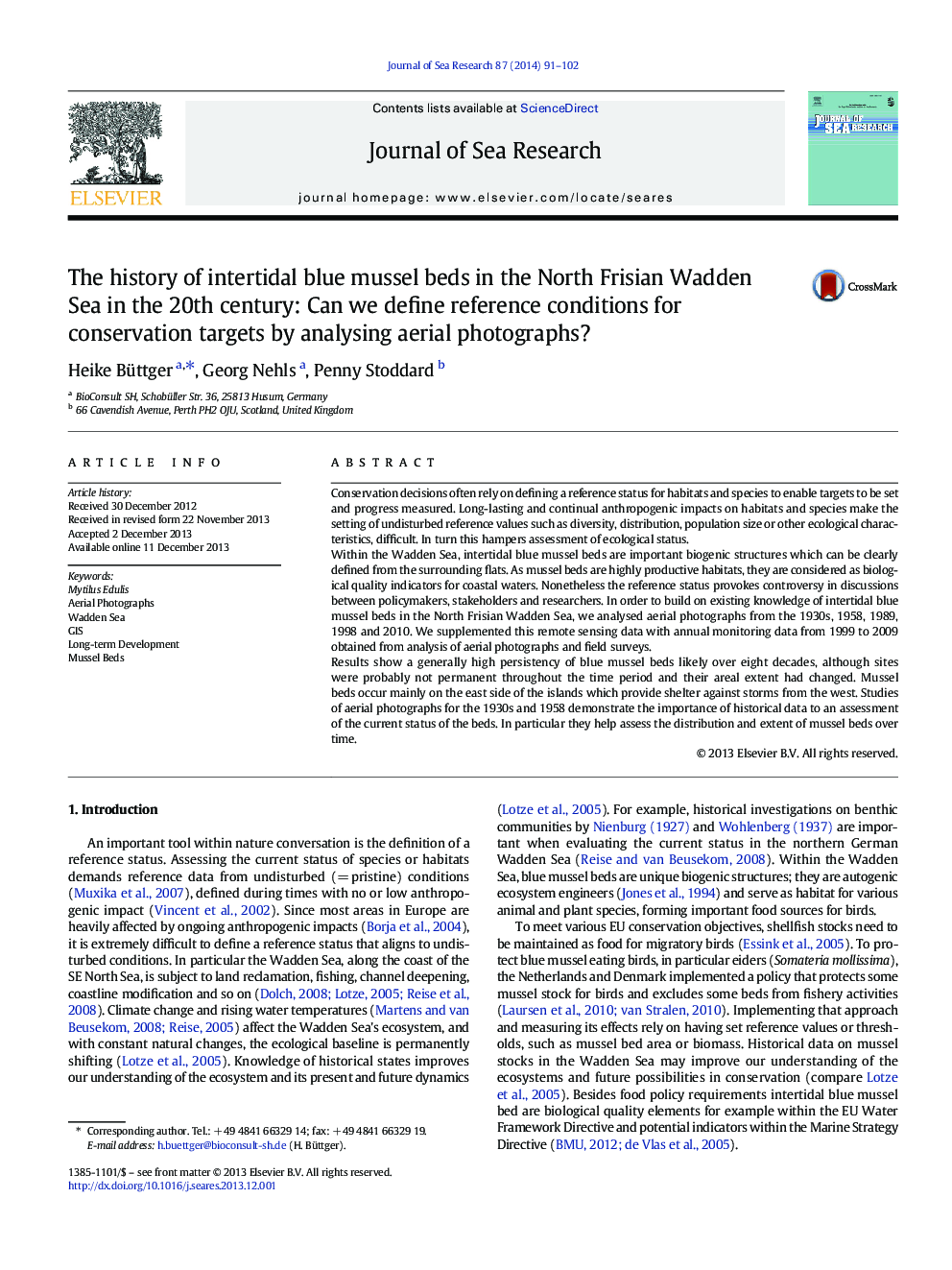| کد مقاله | کد نشریه | سال انتشار | مقاله انگلیسی | نسخه تمام متن |
|---|---|---|---|---|
| 4549828 | 1627487 | 2014 | 12 صفحه PDF | دانلود رایگان |
• Intertidal blue mussel beds were determined on historical aerial photographs.
• Results reveal high site persistency of blue mussel beds.
• Historical results are a meaningful amendment to recent data.
• Results are useful to define regional reference values for intertidal beds.
Conservation decisions often rely on defining a reference status for habitats and species to enable targets to be set and progress measured. Long-lasting and continual anthropogenic impacts on habitats and species make the setting of undisturbed reference values such as diversity, distribution, population size or other ecological characteristics, difficult. In turn this hampers assessment of ecological status.Within the Wadden Sea, intertidal blue mussel beds are important biogenic structures which can be clearly defined from the surrounding flats. As mussel beds are highly productive habitats, they are considered as biological quality indicators for coastal waters. Nonetheless the reference status provokes controversy in discussions between policymakers, stakeholders and researchers. In order to build on existing knowledge of intertidal blue mussel beds in the North Frisian Wadden Sea, we analysed aerial photographs from the 1930s, 1958, 1989, 1998 and 2010. We supplemented this remote sensing data with annual monitoring data from 1999 to 2009 obtained from analysis of aerial photographs and field surveys.Results show a generally high persistency of blue mussel beds likely over eight decades, although sites were probably not permanent throughout the time period and their areal extent had changed. Mussel beds occur mainly on the east side of the islands which provide shelter against storms from the west. Studies of aerial photographs for the 1930s and 1958 demonstrate the importance of historical data to an assessment of the current status of the beds. In particular they help assess the distribution and extent of mussel beds over time.
Journal: Journal of Sea Research - Volume 87, March 2014, Pages 91–102
